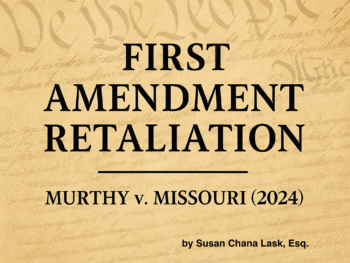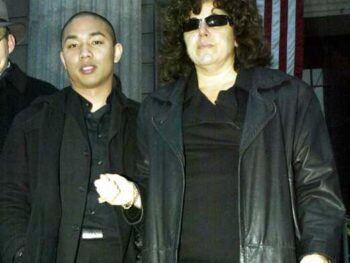I. QUESTIONS PRESENTED
1. Did the Court below commit reversible error by dismissing plaintiff’s
complaint without a cplr 3211(e) motion before it, after time to file that
motion expired and Defendants solely moved to compel Plaintiff to accept
their answer, not dismiss the case on jurisdictional grounds? Yes.
II. STATEMENT OF FACTS
On March 12, 2008, Plaintiff, Robert H. Rotering, Jr. (“Plaintiff”), filed a Summons and Verified Complaint alleging legal malpractice, breach of fiduciary duty, fraud and other related allegations against Defendant attorneys Perry Satz, Satz & Kirschon, PC and Van DeWater and Van DeWater, LLP (collectively, “Defendants”) (A33-49). On April 25, 2008, Defendants’ attorney, David Cabanis, called Ms. Lask to confirm he accepted service for Defendants, he agreed to send the signed waivers of service on behalf of his clients and Ms. Lask agreed to extend Defendants’ time to Answer to June 6, 2009 in response to David Cabaniss’ request for an extension to June 6, 2009 (A31,78-79). On May 5, 2008, Mr. Cabaniss’ sent Ms. Lask a letter confirming the April 25, 2008 agreement, to wit:
“As you will recall from our discussion, my firm has been retained to represent the defendants in the above-matter. This letter will serve to confirm that we will accept service of the summons and complaint on behalf of the defendants in return for your agreement to provide the defendants an extension of time up to and including June 6, 2008 in which to appear, answer or otherwise move with respect to the summons and complaint. Kindly memorialize our agreement by countersigning a copy of this letter in the space provided below and returning same to me via e-mail or fax.” (A50).
Subsequent phone conversations between Ms. Lask and David Cabaniss confirmed his May 5, 2008 letter did not require a countersignature as that was unnecessary and redundant (A77-79).
On June 6, 2009 Defendants joined issue by serving their Answer, verified by their counsel David Cabanis, with their Affidavit of Service, dated June 6, 2009, confirming service on June 6, 2009 (A12-22,52,53). David Cabaniss as Defendants counsel further admitted service of the Answer as agreed upon between counsel by his June 9, 2009 e-mail to Ms. Lask, stating: “I am sending you courtesy copies of the answer and discovery demands which were served on Friday June 6, 2009. ” (emphasis added) (A53). Contemporaneous with Defendants’ service of their Answer, they served discovery demands of a First Set of Interrogatories of 58 demands, Combined Demands of 12 pages requesting witnesses, documents and other demands, a Notice to Submit to Physical Examination and a Notice to Take Dr. Rotering’s Deposition; all of which Defendants’ counsel Cabaniss confirmed serving and Plaintiff’s counsel, Ms. Lask, confirmed receipt (A53). From June, 2008 through January, 2009, the parties’ counsel engaged in multiple conferences regarding discovery and other issues and court dates, including completing the preliminary conference order, scheduling Plaintiff to file a Note of Issue by April 8, 2009, and digesting discovery of over
3,600 pages of documents received from Defendants (A81-83).
On June 11, 2008 and July 19, 2008, Plaintiff requested that Defendants’ provide a properly verified Answer (A23-24). On July 21 and 29, 2008, Defendants’ counsel Mr. Cabaniss responded that the Answer was properly verified and he refused to cure any defect (A23,55). Discussions and letters went back and forth regarding substantive and procedural issues between counsel. On July 29, 2009, Defendants stated “I suggest we move forward with litigating the substance of this action…”(A56). At no time after 60 days from the date of Defendants’ Answer of June 6, 2009 did Defendants file a mandatory §3211(e) motion objecting to service.
On September 19, 2008, Plaintiff filed a Motion to Strike Defendants’ Answer as unverified pursuant to CPLR §§3020 and 3022 (A8-27). On October 24, 2008, Defendants filed a Cross-Motion for an order compelling Plaintiff to accept Defendants’ Answer (A28-76). On November 7, 2008, Plaintiff responded and replied to the Cross Motion requesting an order compelling Defendants’ to execute a verification on behalf of the corporate Defendants (A77-80).
On November 18, 2008, the parties executed a Preliminary Conference Stipulation “So Ordered” on November 24, 2008 (the “PC Order”) (A81-83). The PC Order detailed an expedited discovery schedule agreed to by counsel, including depositions commencing January 20, 2009, final discovery responses served by
December 12, 2008, a medical exam of Plaintiff by March, 2008, dispositive motions and an April 8, 2009 Note of Issue filing. The PC Order did not reference any objection to service of the Summons and Complaint, jurisdiction, nor did defendants therein reserve objections pursuant to CPLR §3211(e).
On or about December 16, 2008, Defendants responded to Plaintiff’s discovery demands by sending a disk containing over 8,600 pages of documents. On or about December 24, 2008, Plaintiff responded to Defendants’ 58 interrogatories and other discovery demands and Defendants’ responded to Plaintiff’s discovery demands. On January 6, 2009 the lower court ordered another compliance conference for January 13, 2009 to resolve discovery issues, which was later rescheduled for February 24, 2009.
On February 23, 2009, the lower court filed a Decision and Order dismissing Dr. Rotering’s complaint, claiming it lacked personal jurisdiction over Defendants pursuant to CPLR §306(b) because Plaintiff did not file proof of service of the Summons and Complaint within 120 days and there was no proof that Defendants accepted service (A2-4). There was no CPLR §3211(e) motion before the lower court when it made that decision and the statute it relied upon, CPLR §306-b, was repealed. On March 12, 2009 Plaintiff filed and served a Notice of Appeal (A1).
III. ARGUMENT
A. This Department Holds in Daniels v. King Chicken & Stuff, Inc That it is Error for the Lower Courtto Dismiss A Complaint Without a CPLR 3211(e) Motion Before It
CPLR §306-b provides that the Court shall dismiss an action without prejudice upon motion. The lower court held that it did not have jurisdiction, yet there was no motion before it to make that determination. The only motion that the lower court could have considered on that issue was a CPLR §3211(e) motion. Pursuant to CPLR §3211(e), Defendants were mandated to move to dismiss within 60 days of filing their Answer if they objected to service. Defendants served their Answer on June 6, 2008. They were mandated to serve a 32119e0 motion by August 5, 2008. They never filed that motion but instead engaged in protracted litigation.
Defendants June 6, 2008 Answer raised a Ninth Affirmative Defense against jurisdiction in their Answer (A21), albeit unsupported and dismissable as explained herein below. The lower court used as a basis for its decision to dismiss that “the defendants have asserted, as a ninth affirmative defense, that the court lacks jurisdiction over the defendants.” (A3); however, the lower court failed to follow the law that raising that affirmative defense then statutorily obligated Defendants to file a CPLR §3211(e) motion to dismiss by August 5, 2008. If after August 5, 2008 Defendants did not file that motion then they waived any objection to service.
Defendants never objected or filed a CPLR 3211(e) motion. The only motion Defendants filed was an October 24, 2008 Cross-Motion noticed as “RELIEF DEMANDED: A) An Order directing the Plaintiff to accept the previously served Answer to the complaint, in the event that the court determines that service of the Summons and Complaint was effected.” (A27). Defendants cross-motion was limited to compel Plaintiff to accept their Answer. Although Defendants included innuendo in that motion regarding their misconceptions of what they “believed” was service or not, the fact is that Defendants had to file a CPLR 3211(e) within 60 days of service of their Answer, not complain about their own faults of not doing so by including innuendo in an unnoticed motion dated October 24, 2008. That motion with innuendo was 140 days after they waived any 3211(e) objection. If Defendants did not file a CPLR 3211(e) motion then they could not seek dismissal of the Complaint and the Court had no basis to dismiss the Complaint.
This Department in the exact circumstances involving the same lower court judge, Honorable Pagones, held that it is error to dismiss a complaint without the proper motion before it:
“The Supreme Court erred in sua sponte dismissing the complaint for lack of
personal jurisdiction. CPLR 306-b provides that a court may only dismiss a
complaint for failure to effect timely service of process “upon motion,” not on
its own initiative (see CPLR 306-b). Here, the defendant did not seek dismissal
of the complaint.” Daniels v. King Chicken & Stuff, Inc,35 A.D.3d 345, 827
N.Y.S.2d 186 (2 Dept, 2006).
It is notable that Defendants as attorneys represented by attorneys had the double protection of knowing when to file a CPLR §3211(e) motion to dismiss, yet they deliberately waived that filing. They did not file because they agreed to accept service if Plaintiff extended their time to Answer by June 6, 2008, which is exactly what occurred. After serving their Answer on June 6, 2008, Defendants July 29, 2009 letter confirmed they wanted to litigate the merits of the case, “I suggest we move forward with litigating the substance of this action…”(A57). In furtherance of that intent, Defendants participated in extensive discovery demands and production of over 3,600 pages of documents for a total of nine months of litigation, including executing a So Ordered PC Order (A81-83). There was no obstacle preventing their filing a timely CPLR §3211(e) motion. Among any and all of them as attorneys, they knew when to file the motion. They chose not to file. Since they never moved within the statutory mandated 60 days after filing their answer, in which lack of personal jurisdiction was raised as their Ninth Affirmative Defense, then a service defense (improperly raised, as discussed below) in an unnoticed motion was waived . CPLR §3211(e); Reyes v. Albertson62 A.D.3d 855, 878 N.Y.S.2d 623 (2 Dept. 2009).
Moreover, Defendants never requested nor provided a basis for the court to extend the statutory deadline “upon the ground of undue hardship” (CPLR §3211(e)) or upon application for “good cause shown” (CPLR §2004).
Accordingly, the jurisdictional objection was waived.
It was also error for the lower court to reference Defendants’ Ninth Affirmative Defense as a basis to support its decision to dismiss the Complaint. That Affirmative Defense made it incumbent upon Defendants to file their CPLR §§306-b and 3211(e) motion in 60 days and, notably, that Ninth Affirmative Defense was unreliable for any court to dismiss a complaint at anytime because it is alleged in uncertain terms without factual allegations to support, to wit:
” Upon information and belief, the court lacks jurisdiction over the Defendants and as a consequence the Verified Complaint must be Dismissed.”
That is not only unreliable boilerplate language but worse, because Defendants predicate it with “upon information and belief” then it is an uncertain defense, which can not stand. The uncertainty is proven because Defendants allege it without any supporting facts, leaving us with no idea just what jurisdiction the lower court lacked and how. It is simply a conclusion of law pled as an uncertainty with a predicate, and without specifics to raise a service issue.
The law is clear: “Affirmative defenses pled as conclusions of law which are not supported by factual allegations are insufficient and should be dismissed. Petracca v. Petracca, 305 A.D.2d 566 (2nd Dept.2003); Bentivegna v. Meenan Oil Co., 126 A.D.2d 506 (2nd Dept.1987). Thus, the lower court had no basis to rely on that “defense” to support its decision to dismiss Plaintiff’s Complaint. Even if it was pled correctly, it mandated Defendants to file the proper CPLR 3211(e) motion to dismiss within 60 days of filing their Answer, which Defendants waived.
The lower court’s decision in the instant case is not only inconsistent with this Department’s holding in Daniels, supra. involving the same lower court judge then, but is inexplicable when Honorable Pagones in Parsons v. Parsons, 6 Misc.3d 1032(A), 2005 WL 517471 (N.Y.Sup) refused to dismiss that case for lack of personal jurisdiction with similar and even worse facts to the case at bar. In Parsons, after 9 months of litigation where service of the Complaint was never made, Defendants failed to formally appear, and upon a filed Motion to Dismiss, Honorable Pagones refused to dismiss:
“A defendant, pursuant to CPLR Rule 320 may appear by serving an answer, by serving a notice of appearance or by making a motion effectively extending the time to answer. Such an appearance is equivalent to personal service of the summons unless an objection to jurisdiction is made. (CPLR Rule 320[b].)… However, plaintiff’s former counsel failed to serve a complaint although CPLR §3012 requires such service even in the circumstances, such as presented herein, where defendant’s counsel fails to make a demand and fails to formally appear. These gross derelictions of their respective statutory obligations notwithstanding, the parties’ attorneysundertook to fully litigate this action as if they had complied with support of this motion is necessarily vague and highlights the fact that the parties have hoisted themselves onto this petard. Counsel neither denies nor acknowledges that he accepted service of the summons with notice thus allowing him to argue that the Court lacks personal jurisdiction.
Plaintiff’s former counsel spawned this argument by failing to obtain a written stipulation acknowledging service and defendant’s appearance in the action. The plaintiff’s former counsel contributed further to the morass by failing to serve a complaint as required. However, the Court cannot ignore the fact that the parties physically appeared for a preliminary conference, signed a written stipulation as to fault, and undertook to negotiate and litigate the issues of maintenance and equitable distribution for nine months.
These efforts have consumed an extensive amount of time by the attorneys for both parties, have resulted in a considerable expense to the parties, and have involved a considerable amount of the Court’s time in working with counsel toward a negotiated resolution of this action. It would amount to an abominable waste of judicial and private resources to dismiss this action at this juncture on the grounds advocated by defendant’s counsel and the peculiar facts herein. CPLR §3012(b) provides that ” court upon motion may dismiss the action if service of the complaint is not made as provided in this subdivision.” emphasis added) The unequivocal statutory language provides that dismissal of the action for failure to serve a complaint is discretionary. I decline to exercise my discretion in this particular case on the facts presented. Therefore, it is ordered that defendant’s motion to dismiss is Denied.” Parsons v. Parsons, 6 Misc.3d 1032(A), 2005 WL 517471 (N.Y.Sup)
If the same lower court in Parsons refused to dismiss with facts much worse and rationalizing there it would be “abominable waste of judicial and private resources to dismiss” that action at that juncture of 9 months of litigation, then that same lower court can not rationalize dismissing the complaint at bar with parties similarly litigating for 9 months, including court conferences, discovery of over 3,000 pages and an executed PC Order. And here, contrary to Parsons, service of the Summons and Complaint is admitted, all parties appeared, and an Answer was filed. It is reversible error considering the same lower court’s inconsistent decisions between this case and its holding in Parsons, and this case and this Department’s holding in Daniels, supra., and contrary to the statutory mandates of CPLR 3211(e).
B. IT WAS ERROR FOR THE LOWER COURT TO RELY ON NONFATAL ERRORS AND A REPEALED STATUTE CPLR 306-B TO SUPPORT ITS DECISION THAT FAILURE TO FILE A PROOF OF SERVICE DEMANDS A DISMISSAL OF THE COMPLAINT
The lower court’s decision further misstates the law, claiming that the case must be dismissed because a proof of service was not filed “within one hundred and twenty days after the filing of the summons and complaint as required by CPLR 306-b” (A3). That used to be so according to a prior version of the statute applicable to service that lack of proof of service within 120 days was a fatal jurisdictional defect; however, that was repealed a long time ago in 1998. McKinney’s CPLR 306-b (Repealed). The lower court ignored the repeal. Consistent with the repeal, cases hold that non filing of a proof of service is a nonfatal, non-prejudicial error. Once Defendants served and filed their Answer, it obviated the need for filing of proof of service. Tucker v. Leak, 701 N.Y.S.2d 410 (1 Dept., 2000). Notably, the lower court’s opinion does not cite law supporting that failure to file a proof of service means there is no jurisdiction because no such law exists.
Even if there was a proof of service issue, which there is not, the Second Department takes a practical approach in situations like this by finding failure to file timely is a technical defect that does not prejudice any party and is easily correctable. Koslowski v. Koslowski, 251 A.D.2d 294, 672 N.Y.S.2d 808 (2 Dept.
1998). In Friedlander v. Ramos, 779 N.Y.S.2d 327(2 Dept., 2004), the Appellate Term allowed for the filing of proof of service nunc pro tunc to meet the provisions of RPAPL 735(2). As stated in Friedlander, ” the object of RPAPL 733(1) service requirement is to ensure that respondents receive adequate notice and an opportunity to prepare any defense they may have (citations omitted).” Similarly here, the object of a proof of service is to prove Defendants are on notice of the complaint and can prepare. A proof of service is used when there is a dispute as to whether the Defendants were adequately served. The lower court’s decision confirms there was no service dispute as it states Defendants cross-motion actually requested the lower court “to compel the plaintiff to accept service of the defendants’ answer to the complaint.” (A2). In Matter of Fry v. Village of Tarrytown, 680 N.E.2d 578, 658 N.Y.S.2d 205,(1997), the Court of Appeals concluded that the threshold filing defect did not authorize a sua sponte dismissal because the respondents appeared in the proceeding and litigated the merits without raising that objection. Here, for 9 months Defendants engaged in litigation, discovery, motions, cross-motions, court and counsel conferences, entered into a preliminary conference stipulation and order, never once objecting to service.
There exist more points of law as to why the lower court could not dismiss Plaintiff’s complaint . For instance, pursuant to CPLR §2001. Mistakes, omissions, defects and irregularities, a court may correct any mistake in the filing process to
prevent interfering with a substantial right of a party. Here, if the lower court was truly concerned about a proof of service, as its decision claims, then it simply could have ordered one filed nunc pro tunc. Instead, and contrary to this Department’s holdings, including Daniels, supra, the lower court prejudiced Plaintiff’s right to complete his case 9 months into litigation, and 11 months after filing and serving the Summons and Complaint. The lower court dismissed Plaintiff’s case without basis, and just some 40 days before a Note of Issue was ordered to be filed pursuant to the PC Order (A81-83). The lower court’s decision never found any prejudice upon Defendants to have taken the extraordinary step to dismiss Plaintiff’s Complaint for failure to timely file a proof of service. Yet its dismissal prejudiced Plaintiff’s due process rights to complete and present his case before the lower court.
As another point of law contravening the lower court’s prejudicial dismissal, CPLR §306(e) provides that a writing admitting service is adequate proof of service. Defendants May 5, 2008 letter admitted service of the Complaint. If the lower court was truly concerned with proof then the letter was the proof. More obvious, the very filing of Defendants’ Answer and their waiving a CPLR 3211(e) motion were proof that Defendants’ were served, obviating any need to file a proof of service. The lower court’s own decision of Parsons, supra, confirms that after 11 months of being served and 9 months of engaged litigation
by the parties after issue was joined, the failure to timely file proof of service is not prejudicial because no injury was caused where notice of the action was possessed by defendant. Hudela v. Posner, 70 Misc.2d 726, 334 N.Y.S.2d 985 (NY. Sup. Ulster, 1972). Also, according to 22 NYCRR 208.1(b), the court has discretion to waive compliance with any of the rules; thus, strict compliance is not necessary.
These statutory allowances comport with the strong preference of the judicial system for resolution on the merits, and where possible, a basis for such resolution should be found. Stolpiec v. Wiener, 474 N.Y.S.2d 820 (2d Dept.,1984); Stark v. Marine Power & Light Co., 99 A.D.2d 753, 471 N.Y.S.2d 668 (2d Dept., 1984).
C. COSTS SHOULD BE IMPOSED UPON DEFENDANTS & THEIR COUNSEL FOR MISREPRESENTING THAT THEY DID NOT “BELIEVE” THEY WERE SERVED AFTER THEY ACCEPTED SERVICE AND WAIVED THEIR RIGHT TO OBJECT UNDER CPLR §3211(E)
CPLR § 8107 permits costs in an appeal to the party obtaining a favorable decision. In their October 24, 2008 cross-motion, Defendants, attorneys represented by attorneys, deliberately misled the lower court that they did not “believe” they were served, then included improper innuendo as if there was no jurisdiction over them. That was a patent misrepresentation when Defendants knew they waived any service issue by not filing a CPLR 3211(e) motion by August 5, 2008.
Defendant attorneys represented by attorneys then submitted affidavits of Defendant Satz and their counsel, James Nelson, denying they accepted service in direct contravention to Defendants’ counsel David Cabaniss admitting he accepted service, to wit: “My attorney offered to accept service of the Summons and Complaint” (A59) and “Our attorney offered to accept service of the Summons and Complaint” (A64). Although they couch it as an “offer”, that is false because their May 5, 2008 letter never stated it was an “offer”. It in fact was confirming what was agreed to-as simple extension of time for Defendants’ to serve their answer by June 6, 2008. Also, Defendants never objected to service via a subsequent letter or a CPLR 3211(e) motion if it was just an “offer”. Moreover, there is no law, statute or requirement to countersign a letter that confirms an agreement that was made and completed, nor is there such logic to base a defense of no jurisdiction because Defendants confirmatory letter was not countersigned.
More disturbing is Defendants filing false affidavits to bolster their false position of “believing” they did not accept service. First, an affidavit is made by a person who has personal knowledge. Yet Defendant Satz and James Nelson never being privy to any conversations between Ms. Lask and David Cabaniss, including on April 25, 2008 when the extension of time to serve their answer was agreed to (A75), Defendant Satz and James Nelson’s affidavits deceive us to believe they
had knowledge of that agreement by the very fact they submit affidavits on the issue. It is quickly noted that they do not state they were privy to conversations between Ms. Lask and David Cabaniss because they were not. The purpose of those affidavits was solely to mislead the lower court by bolstering David Cabaniss’ false argument that because he did not “believe” he accepted service because, he claimed, there was no countersignature to his May 5, 2008 letter, then there should not be service (A30). He proves his argument frivolous by confirming he participated in 9 months of serious litigation without challenging service as “However, in order to move the case forward, your deponent served an Answer to the Complaint.” (A30). That position of serving an answer to move the case forward conflicts with his position that he did not “believe” he accepted service. It’s a frivolous, misleading argument for Defendants’ to inject innuendo that they did not “believe” they accepted service.
They swear as attorneys that because the waivers of service were not signed by the actual Defendant parties then the Defendants were not served (A31-32,59,63-64). That is false because CPLR 312a-(b) permits an attorney for a party to execute the waiver. In this instance, David Cabaniss as Defendants’ counsel agreed to Answer by June 6, 2008 and to send the waivers. He answered as agreed, but did not send the signed waivers. His afterthought in his October 24, 2008 cross-motion to claim that the unsigned waivers means Defendants were not served is absurd, and proves his unclean hands. It is but for David Cabaniss withholding the waivers he agreed to return that they remain in his possession unsigned. More egregious is the fact that he submits the unsigned waivers as exhibits to his motion to prove he is withholding them (A60-61,65), and further proving what underhanded, sharp practice he engaged in this case.
To clear the record, the purpose of the waiver of service form is to save the expense of personal service on a defendant. Either a defendant or his counsel can return the waiver within a certain period of time, which then starts running their 20 days to answer. Since Defendants’ were represented by counsel and their counsel agreed to an extension of time to answer which they then served and filed the answer, then that obviated any need for a waiver of service. Thus, Defendants Satz’ affidavit claiming because he did not sign the waiver makes service impossible is false.
The inherent misrepresentations with their affidavits continue as James Nelson affirms that the waivers went directly to his office and never to the Defendant Van DeWater, to wit: “A statement of service by mail and an acknowledgment of receipt of a summons and complaint were mailed to our offices at 40 Garden Street, Poughkeepsie, New York.” (A64). Yet 40 Garden Street is Defendants’ VanDeWater’s and Satz’ address, not James Nelson’s address. Second, Plaintiff never knew beforehand who Defendants malpractice insurance counsel was; thus, Plaintiff could never have mailed anything to James Nelson at his address in Albany which he falsely claims occurred. In fact, Mr. Nelson’s client Defendant Satz’ affidavit confirms contrary to Mr. Nelson that “A statement of service by mail and an acknowledgment of receipt of a summons and complaint were mailed to me at the offices of Van DeWater & Van DeWater, LLP, at 40 Garden Street, Poughkeepsie, New York.” (emphasis added) (A59).
As licensed attorneys, 22 NYCRR 130 -1.1 mandates they do not present frivolous contentions and certainly not misrepresent facts. Not only did the Defendants and their attorneys concoct a story of non-service, unsigned waivers, and their “disbelief” of what service meant to them, but they continued their frivolous position by submitting false affidavits of Defendant Satz and James Nelson, both without personal knowledge of the agreement between Ms. Lask and David Cabaniss. The fact that Defendants never filed a timely CPLR 3211(e) motion meant they could not some 140 days after filing their answer claim they were not served, nor include deliberately misleading innuendo to that effect in their motion noticed to compel Plaintiff to accept their Answer as verified.
Costs of this appeal should be made against Defendants as but for their raising a frivolous argument and filing false affidavits the lower court would not have been misled and this appeal on obvious facts and law would not have been necessary.
IV. CONCLUSION
For all of the forgoing reasons, the order of the Supreme Court must be reversed, with costs, the complaint reinstated and the matter remitted to the Supreme Court.
Dated:New York,NewYork
October 12, 2009
Yours, etc.,
LAW OFFICES OF SUSAN CHANA LASK
______________________
By: Susan Chana Lask, Esq.
Attorney for Plaintiff-Appellant
244 Fifth Avenue, Suite 2369
New York, NY 10001
(212) 358-5762









